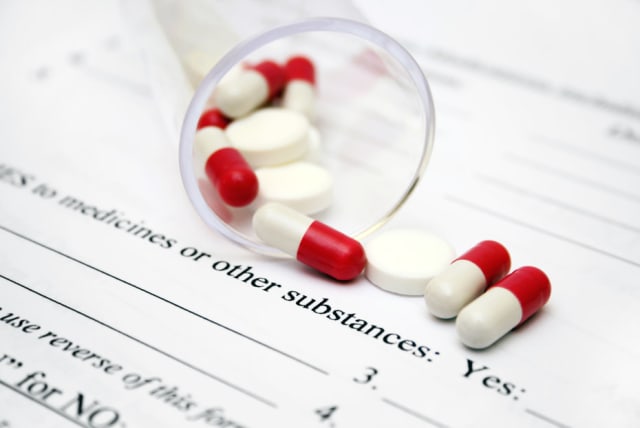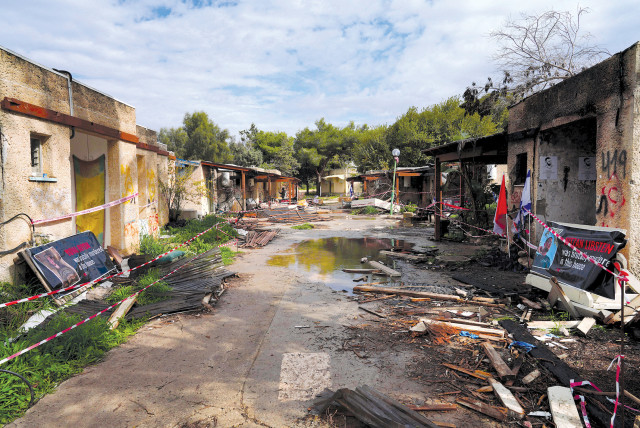1 out of 4 Israelis used addictive substances since Oct. 7

A recent report by the Israeli Center for Addiction and Mental Health indicates that two months after the outbreak of the Swords of Iron War, 1 in 4 Israelis uses addictive substances increasingly.
Since the October 7 massacre, 1 in 4 Israelis have been using addictive substances, according to a recent report by the Israeli Center for Addiction (ICA). These substances include alcohol, unprescribed drugs, and prescription drugs, at a total 15% increase from the corresponding figure in mid-2022, although increased risk use of alcohol among certain cohorts actually decreased.
The report indicates, among other things, a significant increase in the use of prescription drugs, sedatives and sleeping pills in particular. As of December 23, some 1 in 6 Israelis were dealing with an addiction to prescription drugs. Additionally, 1 in 10 were dealing with addiction to sedatives and sleeping pills - an increase of 100% and 180% compared to 2022.
The ICA published an up-to-date report as of December 2023, about two months after the outbreak of Israel's war with Hamas following the October 7 attack, depicting an increase in high-risk use of addictive substances: 1 in 4 Israelis uses high-risk addictive substances (alcohol, unprescribed drugs, and prescription drugs), an increase of 15% from the corresponding figure in the middle of 2022 (26.1% versus 22.7%, respectively).
The increase in the use of increased risk sedatives and sleep medications was found regardless of gender and age (among women, men, young and old). Among young people, a 7% increase was found in the increased risk use of cannabis (13.4% vs. 12.5%). At the same time, among men and among young people, a decrease of about 20% was found in the increased risk of alcohol use.
In addition, the increase in high-risk use of addictive substances parallels the increase in the proportion of Israelis who suffer from post-traumatic stress following the events of October 7: approximately 1 in 3 women and approximately 1 in 5 men were found to have a high level of post-traumatic stress following the events, an increase of about 150% and 65% respectively in relation to the data in 2022.
High levels of anxiety, depression, and post-traumatic stress were found to be associated with increased risk use of each type of substance – almost half of those who suffer from these conditions use one or more addictive substances at increased risk, compared to 20% of those who do not suffer from these conditions.
At the same time, a direct relationship was found between exposure to traumatic events and content, and an increase in the use of addictive substances. The more a person feels mental distress due to the exposure, the higher the risk of increasing the use of addictive substances.
Four levels of exposure to the events of 10/7 were examined:
- Direct exposure: those who were at the events themselves, whether civilians or rescue and security forces - almost half of those exposed (47%) consumes more addictive substances
- Frequent and continuous media exposure: to uncensored verbal or graphic content (several times a week or more): more than 1 in 4 Israelis (28%) in this category consumes more addictive substances
- Secondary exposure: contact with victims, whether through a family, social, or professional connection: almost 1 in 4 Israelis (23%) in this category consumes more addictive substances
- None of the above: about 1 in 10 Israelis (9%) in this category consume more addictive substances.
The level of exposure played a significant role in contributing to substance use.
Are Oct. 7 massacre survivors the most vulnerable?
Among people who were evacuated from their homes or had members of their immediate family evacuated from their homes following the war, it was found that they suffered high levels of exposure to the traumatic events and mental distress as a result, and reported an increase in the use of addictive substances, with 1 out of 3 of them reported that they increased the use of alcohol, unprescribed drugs, or prescription drugs following the events.
A similar rate of increase in increased risk usage was found across socioeconomic status, whether below average, average, or above average.
On the other hand, a relationship was found between the level of religiosity and the increase in the proportion of those using increased risk substances. Among haredim (the ultra-Orthodox), compared to the secular, traditional and religious, no increase in the use of increased risk was found.
Among haredim, lower levels of post-traumatic stress, anxiety and depression were found, compared to the other groups, although the level of post-traumatic stress was lower among the ultra-Orthodox in 2022 as well, and it also increased in 2023. Haredim reported less direct exposure to events and exposure through the media, so the level of stress and exposure can partially explain the findings (although in secondary exposure - through a family member - they were only lower than religious).
Other explanations include underreporting due to stigmas regarding substance use and mental health issues, stricter social norms regarding substance use, or resilience factors related to community characteristics.
Among the general population, there has also been an increase in gaming addiction and excessive use of the internet and social media. Along with this, there was a decrease in compulsive sexual behavior (although there was no change in the consumption of pornography). Among men and among adults there has been an increase in gambling.
Prof. Shauli Lev-Ran, academic director and founder of the ICA, stated: "We wish to warn the public against the excessive use of addictive substances as a way to deal with stress, anxiety, and exposure to traumatic events. Despite the immediate effect of these substances on feelings of emotional distress, The relief they provide is only temporary, and in the long term, increased-use damages resilience may lead to addiction, and impairs natural and healthy coping."
Jerusalem Post Store
`; document.getElementById("linkPremium").innerHTML = cont; var divWithLink = document.getElementById("premium-link"); if (divWithLink !== null && divWithLink !== 'undefined') { divWithLink.style.border = "solid 1px #cb0f3e"; divWithLink.style.textAlign = "center"; divWithLink.style.marginBottom = "15px"; divWithLink.style.marginTop = "15px"; divWithLink.style.width = "100%"; divWithLink.style.backgroundColor = "#122952"; divWithLink.style.color = "#ffffff"; divWithLink.style.lineHeight = "1.5"; } } (function (v, i) { });


